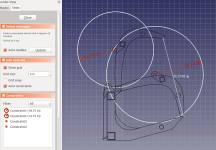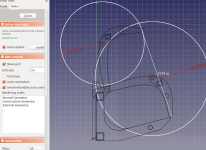Ok, one question plz. As it looks like there are only details left to be done
a) About the cylinder. Is it a good practise, when the cylinder extends full, the tips of lids to be just before the tines , exactly, or meet the tines just before it extends fully? I mean will it shorten the life of the cylinder (I doubt it since the tines will have some flexibility anyway)? I guess pinching will be a usefull thing.
a) About the cylinder. Is it a good practise, when the cylinder extends full, the tips of lids to be just before the tines , exactly, or meet the tines just before it extends fully? I mean will it shorten the life of the cylinder (I doubt it since the tines will have some flexibility anyway)? I guess pinching will be a usefull thing.
Last edited:

